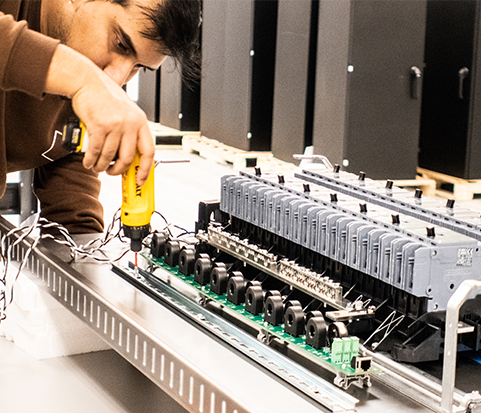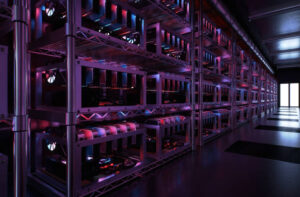These day electronics are everywhere and many industries centres itself around electronics from data centres and server rooms to industrial settings or home office. Protecting these electronics to be safe, efficient and reliable, more so at present is important. One of the most important instruments that can protect your electronics from the potential problems associated with power solutions is a Power Distribution Unit (PDU).
A Power Distribution Unit is made for each device from one supply to be powered. It may appear as a basic gadget, but it has an important job in protecting your electronics, as well as enhancing general system operation. This blog will look at why a PDU is necessary for your electronics protection and for efficiently running your power infrastructure.
What Is a Power Distribution Unit (PDU)?
In essence, a Power Distribution Unit (PDU) is a means to divide electrical power to different electronic equipment coming from a single power source. PDUs are typically rated to be either a rack mounted, or a floor mounted type. The general use of a PDU is in data center or in server room, in which many devices have to be powered simultaneously.
Rack-mounted PDUs are made to fit into standard server racks and can provide power to various rack mount devices, such as servers, switches and routers. Floor mounted PDUs are bigger and more versatile and often utilized in a big room or an industrial enterprise that requires multiple power outlets throughout the room.
However, let’s delve into how essential PDUs are when safeguarding your electronics.
1. Preventing Overloads and Short Circuits
Overloading is the most common reason for electronic equipment failure. When too many devices are plugged into one power outlet, the circuit can become overloaded which could result to overheating, power surge or can even cause electrical fires. A Power Distribution Unit can prevent this by offering multiple outlets, each of which having its own circuit breaker.
Many present-day Power PDUs have circuit breakers or fused directly built into them and will power off automatically if there is an over-load detected. In this way, before they can cause damage to the connected devices, power supply is interrupted, thereby preemption the risk of short circuits or fire. Also included in some PDUs of surge protection safeguarding electronics from voltage spikes that can destroy sensitive components.
2. Surge Protection and Voltage Regulation
The sudden spikes of utility voltage, known as spikes, can be very destructive to sensitive electronics. They can blow up the power supply or blow circuit boards in extreme cases. Surges are created from various sources like lightning strikes, a sudden increase or decrease in electrical demand, or a malfunctioning electrical wiring.
A proper Power Distribution Unit is equipped with surge protection that can absorb appliance voltage spikes and divert it from your equipment. This means that all your electronics get a steady and stabilized flow of electricity with no chance of power surges. Also, some PDUs are equipped with voltage regulation, which prevents the voltage level from becoming irregular, and thus saving the electronic devices from minor fluctuations in voltage, that can tend to cause damage in the components of an electronic device over time.
3. Ensuring Efficient Power Management
With rising amount of electronic devices being used in modern buildings, an effective power management system is essential. Unmanaged devices could be using more power than they need to, resulting in energy waste and higher electricity bills. Moreover, poor power distribution can result in hotspots in the power system, causing overheating and possibly damaging the equipment.
Many men PDUs have energy oleh that enables users to monitor power consumption in real time. This allows facility managers or IT administrators to check power consumption and identify places where energy can be saved or where equipment is over-consumed power. Additionally, PDUs equipped with remote monitoring capability enable proactive management of power usage where notifications can be received when power usage goes beyond safe levels or when there is an issue with the system.
4. Optimizing Space in Server Rooms and Data Centers
Rack-mounted PDUs, especially, aim at maximum space utilization in data centers or server rooms. With all multiple form power sources housed in one unit, PDUs help minimize the amount of power cords cable through racks, increasing room in fittings and reducing the hazard of cable management challenges.
A good cable management is important for both efficiency and safety. Tangled or loose cables can Subscribe B a blockage of airflow, that leads to hotspots within the system and causes overheating. With a PDU, cables are monitored and efficiently oriented, permitting better airflow and leading to better thermal management. This results in a safer environment to your electronics, finally enhancing their lifetime and lowering the possibility of failure due to heat amassed..
5. Remote Monitoring and Control
One of the best features for modern PDUs is that they support remote monitoring and control. This lets IT administrators or facility managers remote monitoring status of their power systems, giving them greater flexibility and cutting down frequency of having to visit sites. If an issue looks like a surge or overload the PDU is capable of sending out alerts to your administrator’s device to allow the administrator to take action immediately.
Also some PDUs has the ability to reboot the power to the individual oultet(s). It can be especially helpful in circumstances where devices need to be rebooted or powered down without having to handle the respective equipment physically. Reactive monitoring and control increase uptime and reliability, also reduce the demand for manual intervention, can lead to human errors.
6. Reducing Downtime and Improving Reliability
Downtime not planned can prove expensive for any business, especially if one is dealing with critical electronics or the servers. A PDU really does play an important part in reducing downtime, what with situations having redundancies supplied so there are at all times reliable power sources going to your hardware.
For example, dual input PDUs have two power inputs so, they can keep running even if one power supply is failed. This redundancy helps that critical systems should never start running down again and that here business operations do not have to suffer for too long and that your electronics are in no way, from threats of the powering.
7. Improved Safety Standards and Compliance
In certain sectors, for example healthcare or finance, keeping safety standards and regulatory compliance is very important. PDU’s hold important part in meeting these standards by offer safe effectively and efficient power distribution. A lot of PDUs are certified compliant to several safety codes such as UL (Underwriters Laboratories) and CE (Conformité Européene) to guarantee that they fulfill the strictest safety and efficiency requirements.
Using a PDU that conforms to safety standards, firms can power their electronics safely, minimize electrical dangers and keeps them compliant with sector legislation.
Conclusion
A Power Distribution Unit (PDU) is a lot more than simply a device for powering your devices. It’s a musthave for devices that prevents any electrical risk and improves the safety of the electrical devices by increasing energy efficiency, hence extends the lifespan of a device. Whatever it is, From preventing overloads to providing surge protection PDUs is an investment, collateral to the dependability and safety regarding the power of your infrastructure.
Whether you are running a data center, a server room or complex array of electronics, a Power Distribution Unit should be an integral part of your power management plan.



